The Dassault Rafale is a French twin-engine multi-role fighter. Developed in the 1980s and ’90s, the fighter was the product of disagreements with allied nations during the development of the Eurofighter Typhoon. The Rafale was introduced in 2001, and serves with the Armée de l’Air and Marine Nationale, as well as the air forces of Egypt, Qatar, India and Greece.
A new fighter and multinational cooperation
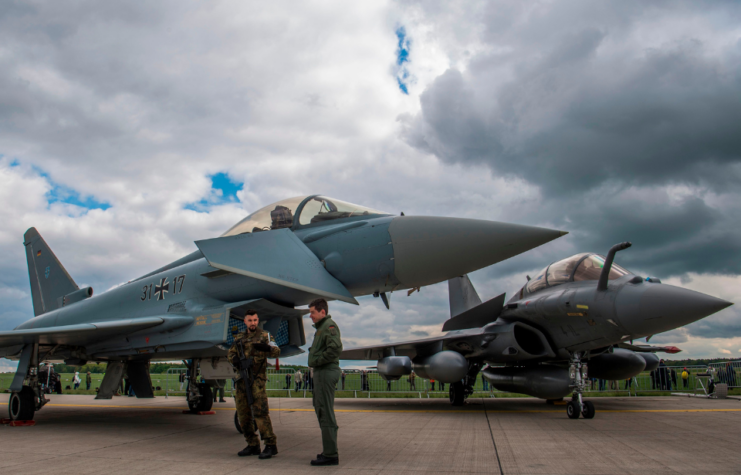
In the 1970s, the French Air Force (Armée de l’Air) and Navy (Marine Nationale) began looking for a multi-role aircraft. Due to similar requirements, and in an attempt to reduce costs, it was decided the services would receive the same aircraft.
In 1975, the Ministry of Aviation decided that key to this would be the aircraft’s ability to work with – and complement – the Dassault Mirage 2000. Four years later, Dassault-Breguet partnered with BAe and MBB for the European Collaborative Fighter project, later renamed the European Combat Aircraft (ECA) program. This collapsed in 1981, following disagreements between the three nations.
Development of the Dassault Rafale
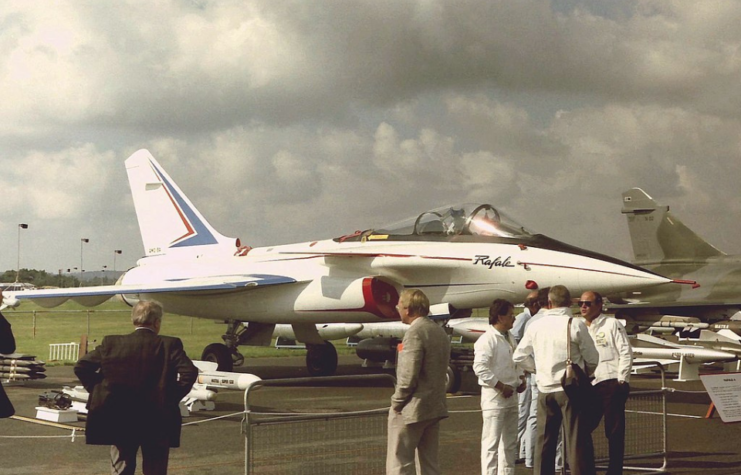
Now on their own, the French proceeded with their own plans. The Dassault Rafale was developed not only to perform these roles, but also to replace other aircraft flown by the Air Force and Navy, including the SEPECAT Jaguar; the Dassault Mirage F1 and 2000; the Étendard IVP/M; the Vought F-8P Crusader; and the Dassault-Breguet Super Étendard.
Single or two-seater?
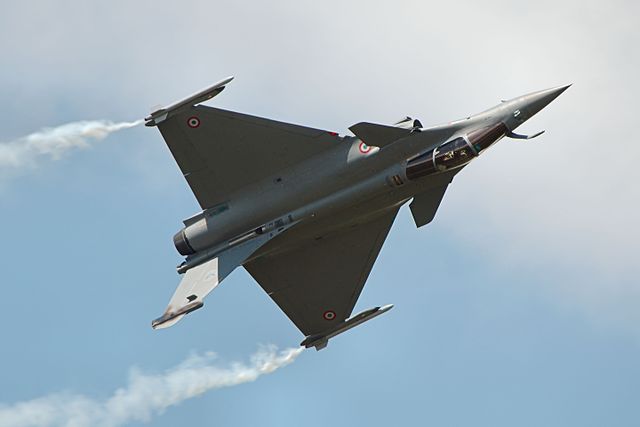
The Dassault Rafale C (chasseur, meaning “fighter”) and B (biplace, meaning “two-seater”) were destined for service with the French Air Force. Initially, the C was to take on the fighter role, while the two-seater would be a trainer. However, the Gulf War showed a second crew member was a useful addition for certain operations.
The Rafale M and N were the naval versions of the aircraft, although the latter was ultimately canceled. While it had the same look as the others, it featured a reinforced structure for carrier landings, as well as the addition of a tail hook and a built-in ladder.
Production began in 1992, with the first aircraft entering service in ’95. The first Rafale B underwent its first flight in 1998, while the first M took to the skies in ’99. The French Navy received the first two production Ms in 2000 and the Air Force received their first Bs in 2005.
Dassault Rafale specs
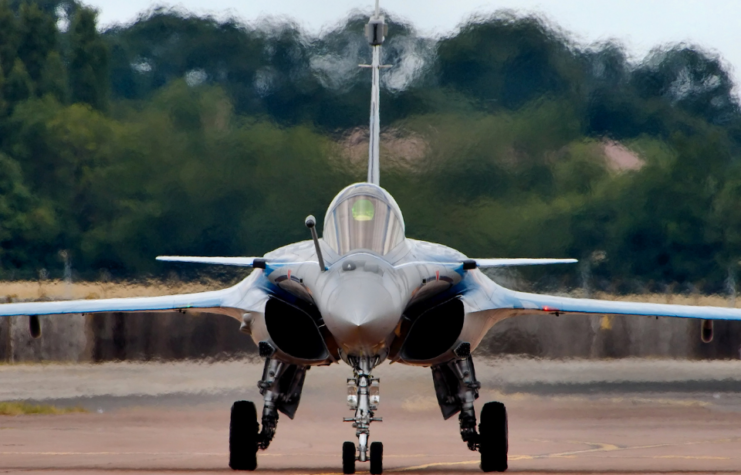
The Dassault Rafale’s design is characterized by a large delta wing with active close-coupled canards, which help maximize the aircraft’s maneuverability. The canards also reduce landing speeds to 132 MPH, and allow the aircraft to fly at airspeeds as low as 17 MPH.
Dassault Rafale with the Aéronavale
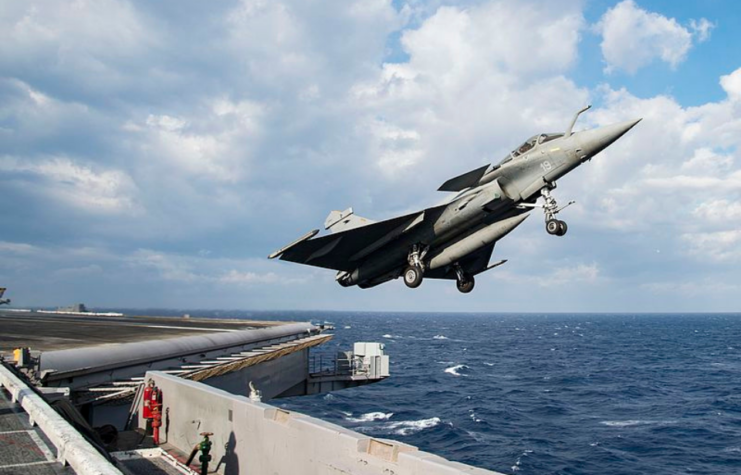
Dassault Rafale with the Armée de l’Air
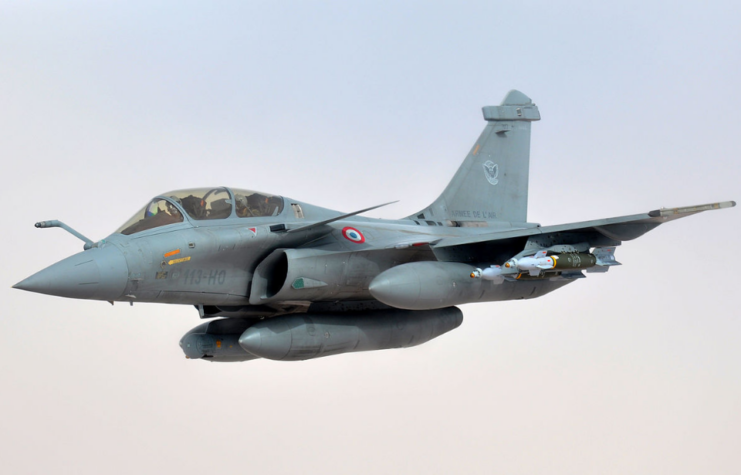
In April 2005, the French Air Force received its first Dassault Rafales. On March 12, 2007, they were deployed on their first operations, supporting Dutch troops in Southern Afghanistan. From 2009-11, at least three were stationed at Kandahar International Airport, participating in NATO operations.
On March 19, 2011, Rafales began conducting reconnaissance and strike operations in Libya during Opération Harmattan. Initially, the targets were artillery pieces, but, later, the fighters directly attacked Benghazi.
Current and future operators
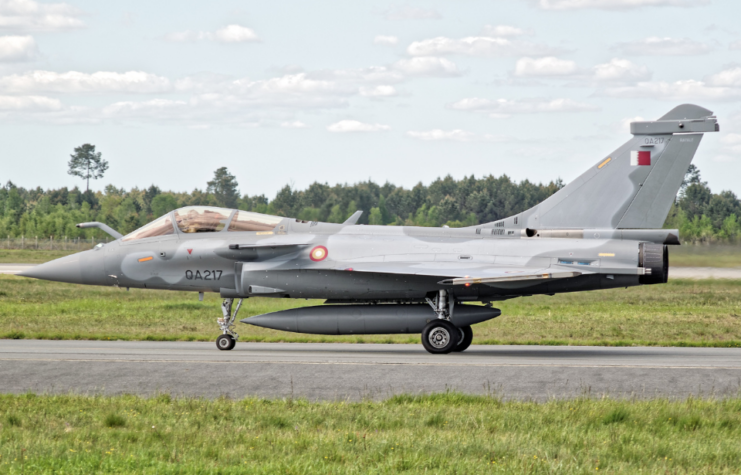
In addition to France, the Dassault Rafale is also flown by the Egyptian Air Force, the Qatar Emiri Air Force, the Hellenic Air Force and the Indian Air Force. The fighter has also been ordered by the Croatian Air Force, the Indonesian Air Force and the United Arab Emirates Air Force.
The Rafale is currently being considered by Bangladesh, Columbia, Iraq, Malaysia, Saudi Arabi and Serbia. There were also many failed bids with nations, including Belgium, Canada, Finland and Switzerland, who chose the Locheed Martin F-35 Lightning II, instead.
